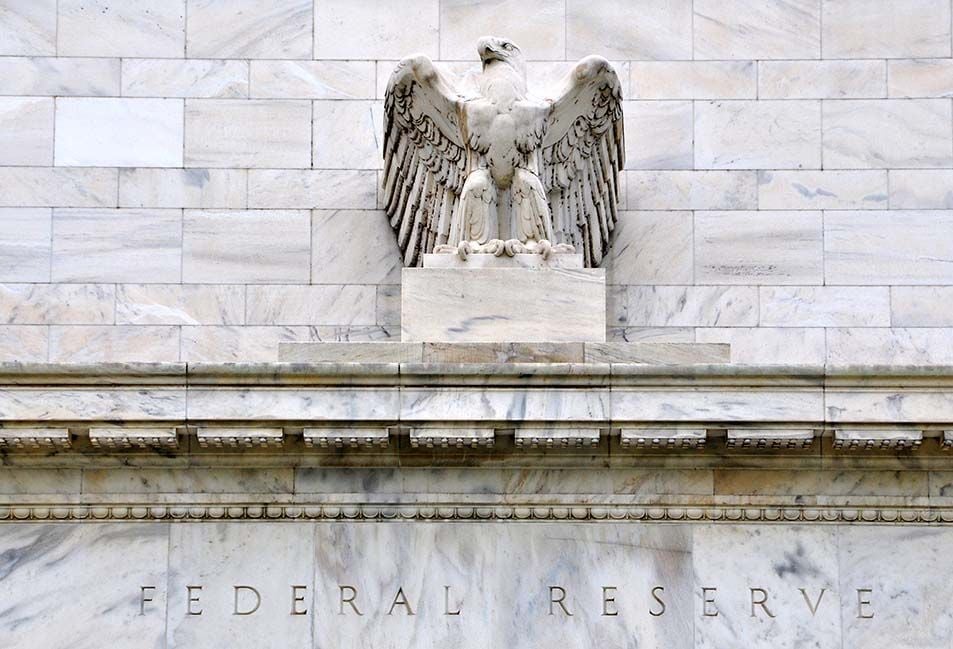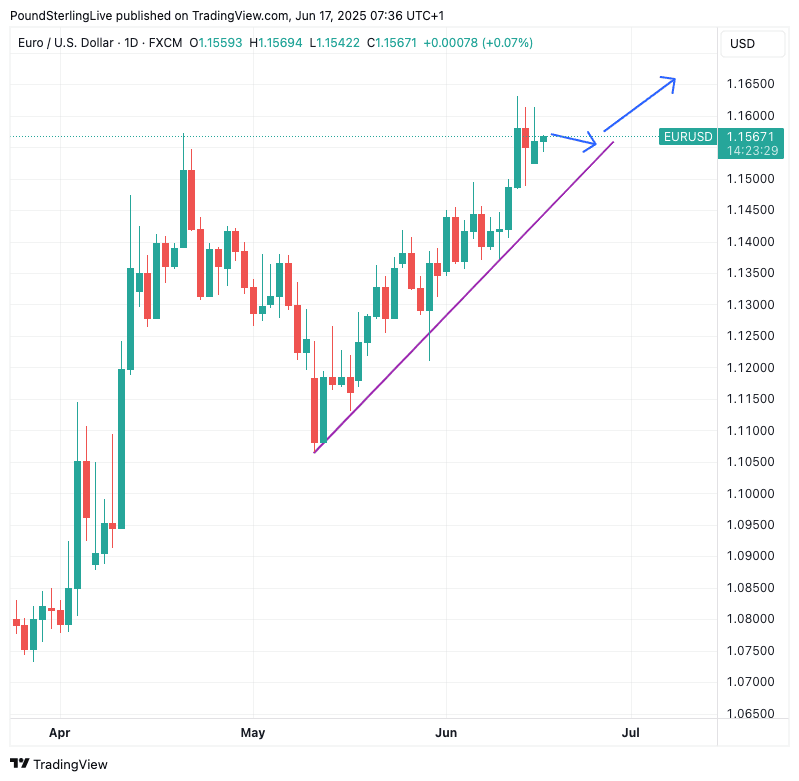Fed Surprise Could be Euro-Dollar Rate's Next Upside Catalyst
- Written by: Gary Howes

Image © Adobe Stock
The Fed could surprise us by bringing the July meeting into play.
With the Dollar seemingly losing interest in the Iran-Israel conflict, the market gaze turns to the midweek Federal Reserve policy update.
The decision could catalyse the next leg higher in the Euro to Dollar exchange rate should the guidance and forecasts point to the prospect of a July rate move, say analysts.
"On FX markets, the dollar failed to profit from recent market volatility and higher oil prices. At EUR/USD 1.1558, it suggests that any sort of negative USD news could deliver another blow to the greenback," says a note from KBC Markets.
The next test for the Dollar will be the midweek Federal Reserve meeting, where interest rates will be left unchanged, and new guidance comes in the form of an updated statement, a press conference and the release of new economic and interest rate forecasts.
Analyst Brent Donnelly at Spectra Markets explains the current market setup and why risk-reward ratios are skewed against the Dollar.
"July is 18% and September is at 75% right now and if there is a surprise, I think it will be that this FOMC meeting is so dovish that it brings July into play," says Donnelly, referring to market-based expectations for future interest rate moves.
Because the market is already leaning against a July rate cut, there is scope for expectations to build in favour of a move happening next month. If this is the outcome, then the Dollar would likely soften against the Euro.
This opens the door to another retest of the 2025 highs near 1.1631.
Above: EUR/USD at daily intervals.
However, analyst Karl Schamotta at Corpay doesn't see a shift towards a July rate cut materialising. He thinks the Fed could "sound relatively hawkish on Wednesday."
'Hawkish' describes central bank guidance that would rather keep interest rates elevated and is resistant to cuts. It is therefore functionally supportive of the Dollar.
Schamotta cites a series of recent appearances and speeches by members of the Federal Reserve, where officials have pointed to still-solid activity data, continued strength in labour markets, and tariff-led inflation risks in justifying a longer waiting period before resuming rate cuts.
Updated forecasts in the Statement of Economic Projections, colloquially known as the 'dot plot', are of particular interest.
Here, Fed members plot their individual expectations for where interest rates should be in the future. Schamotta thinks the median participant will move towards expecting just a single rate cut this year, and a more gradual easing trajectory in 2026.
"Depending on positioning going in, this “high-for-longer” message could keep Treasury yields elevated and the dollar supported," he adds.





